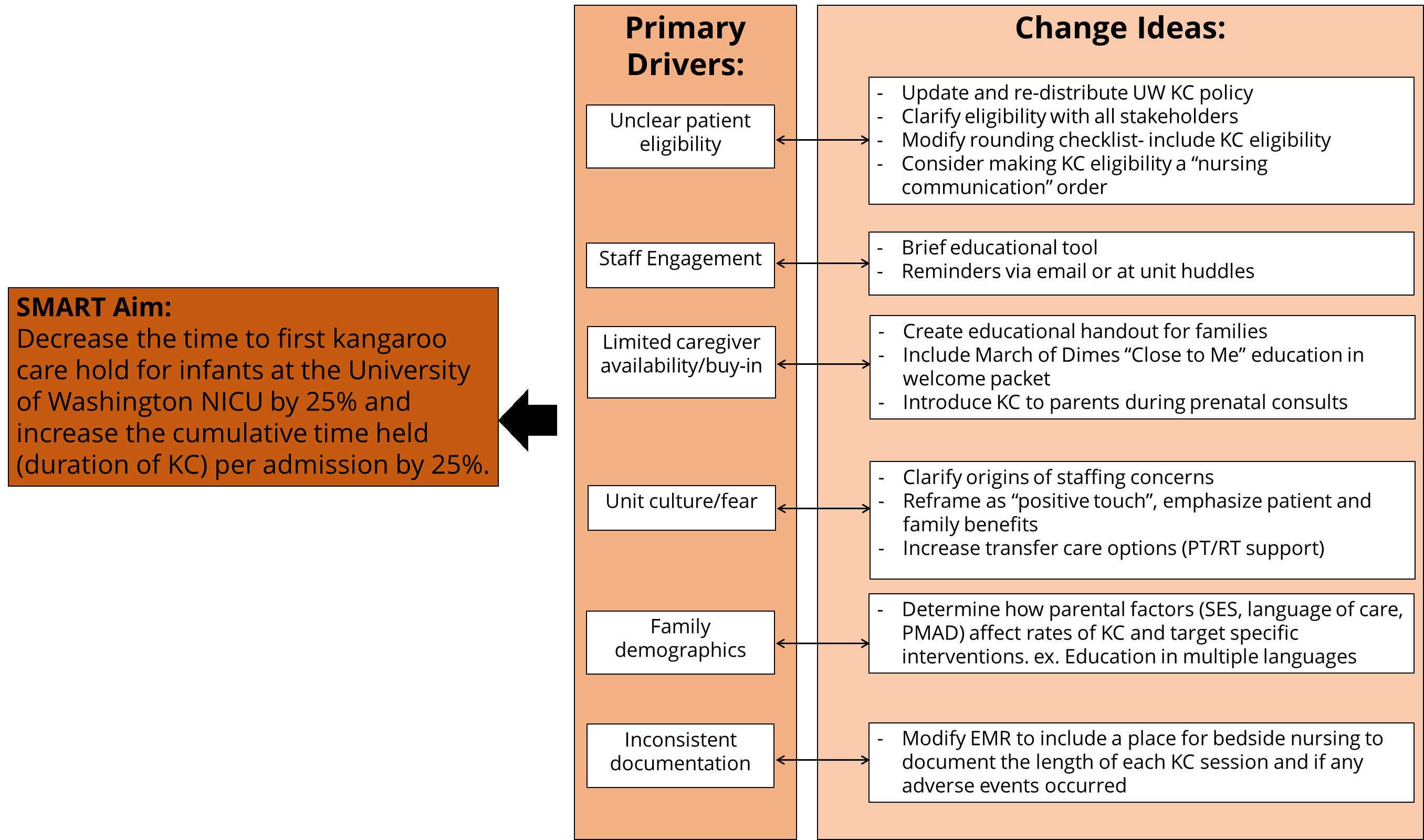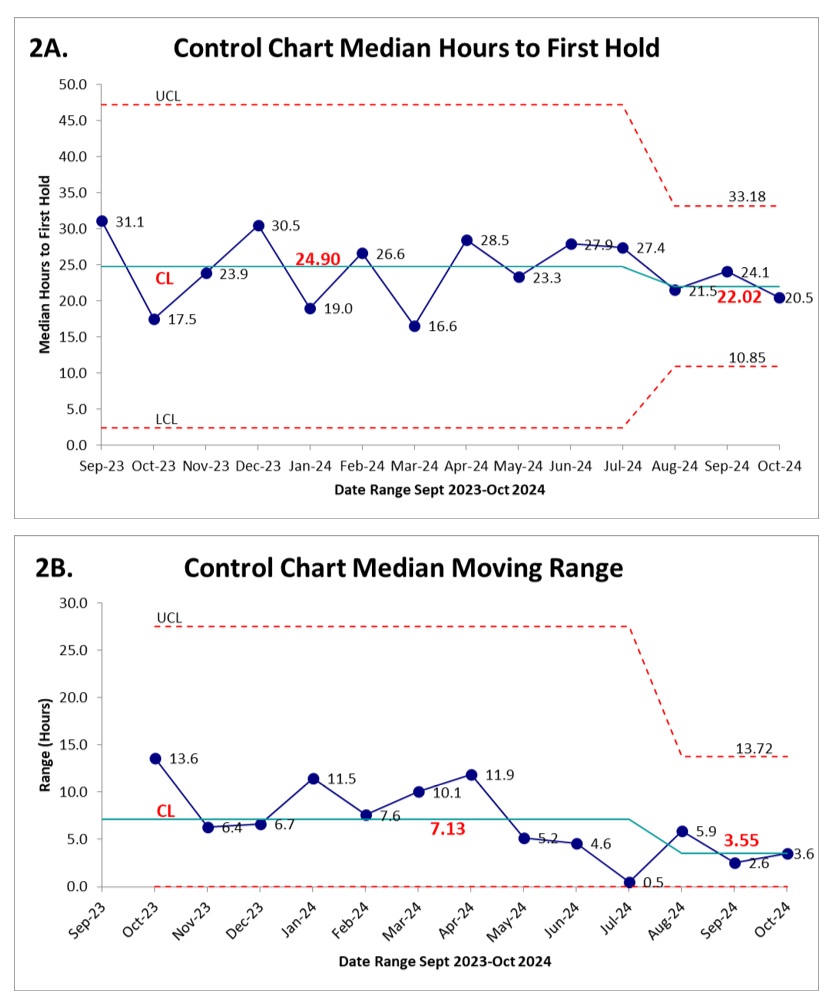Neonatal Quality Improvement 1
Session: Neonatal Quality Improvement 1
052 - Building Systems Infrastructure to Improve Kangaroo Care in a Level IV Neonatal Intensive Care Unit
Friday, April 25, 2025
5:30pm - 7:45pm HST
Publication Number: 52.4175
Stephanie Yeager, Seattle Children's/University of Washington, Seattle, WA, United States; Sarah E. Kolnik, University of Washington - Seattle Children's Hospital, Seattle, WA, United States
- SY
Stephanie Yeager, MD (she/her/hers)
Neonatal-Perinatal Fellow
Seattle Children's/University of Washington
Seattle, Washington, United States
Presenting Author(s)
Background: Kangaroo care (KC) has been shown to improve neonatal outcomes, including enhanced bonding, improved thermoregulation, and decreased length of hospital stay. Despite clear evidence supporting the benefits of this low-cost, high-yield intervention, there remain multiple barriers to achieving consistent KC in the NICU. Our center, a level IV academic NICU, had only 43% of eligible infants being held within the first 24 hours after birth and 25% of infants with no documented KC.
Objective: The SMART aim of this quality improvement (QI) study was to decrease the time to first skin-to-skin hold by 25% and increase cumulative time held per admission by 25% within 1 year.
Design/Methods: A multidisciplinary team developed a key driver diagram (Figure 1) and conducted a series of Plan-Do-Study-Act (PDSA) cycles. The primary outcome was time to first KC hold. Secondary outcome was cumulative time held adjusted by gestational age. Balancing measures included unplanned extubation, line removal and severe apnea, bradycardia or desaturations. Interventions included (1) optimization of documentation in the electronic medical record (EMR), (2) development of a KC unit policy and (3) integration of KC eligibility into the rounding safety checklist.
Results: There were 757 infants admitted between September 2023-October 2024, baseline demographics are shown in Table 1. Process measure change occurred in August 2024 with implementation of KC into safety checklist (Figure 2). The interventions showed a non-significant trend to decreased time to first hold by 12% (24.9 to 22.0 hours; Figure 2a) and a decreased range of time to first hold by 49% (7.1 to 3.6 hours; Figure 2b). Any documentation of time held was low (only 40% of admitted infants), limiting ability to interpret trends for this outcome. Balancing measures did not indicate significant increase of adverse events (Table 1). Qualitative feedback highlighted several barriers to improvement, including time constraints, competing clinical priorities and unclear protocol adoption.
Conclusion(s): This project provided valuable insights into the challenges of implementing KC in the NICU. PDSA cycles aimed at building sustainable infrastructure for this QI initiative did show a trend of decreased time to first hold and a decreased range of time to first hold, which may reflect standardization of processes. Next PDSA cycles will target improving visibility of initiative including: education of staff and families of the new policy and incorporation of KC checklist into EMR allowing for a continuous audit.
Figure 1.
 Driver Diagram for Improving Rates of Kangaroo Care in the University of Washington NICU
Driver Diagram for Improving Rates of Kangaroo Care in the University of Washington NICUTable 1.
.png) Demographics and Balancing Measures
Demographics and Balancing MeasuresFigure 2.
 No sustained change in hours to first kangaroo care hold post PDSA #1 (January 2024) or PDSA #2 (March 2024), early signs of improvement and process standardization after PDSA #3 (August 2024) including narrowing of median moving range
No sustained change in hours to first kangaroo care hold post PDSA #1 (January 2024) or PDSA #2 (March 2024), early signs of improvement and process standardization after PDSA #3 (August 2024) including narrowing of median moving range

